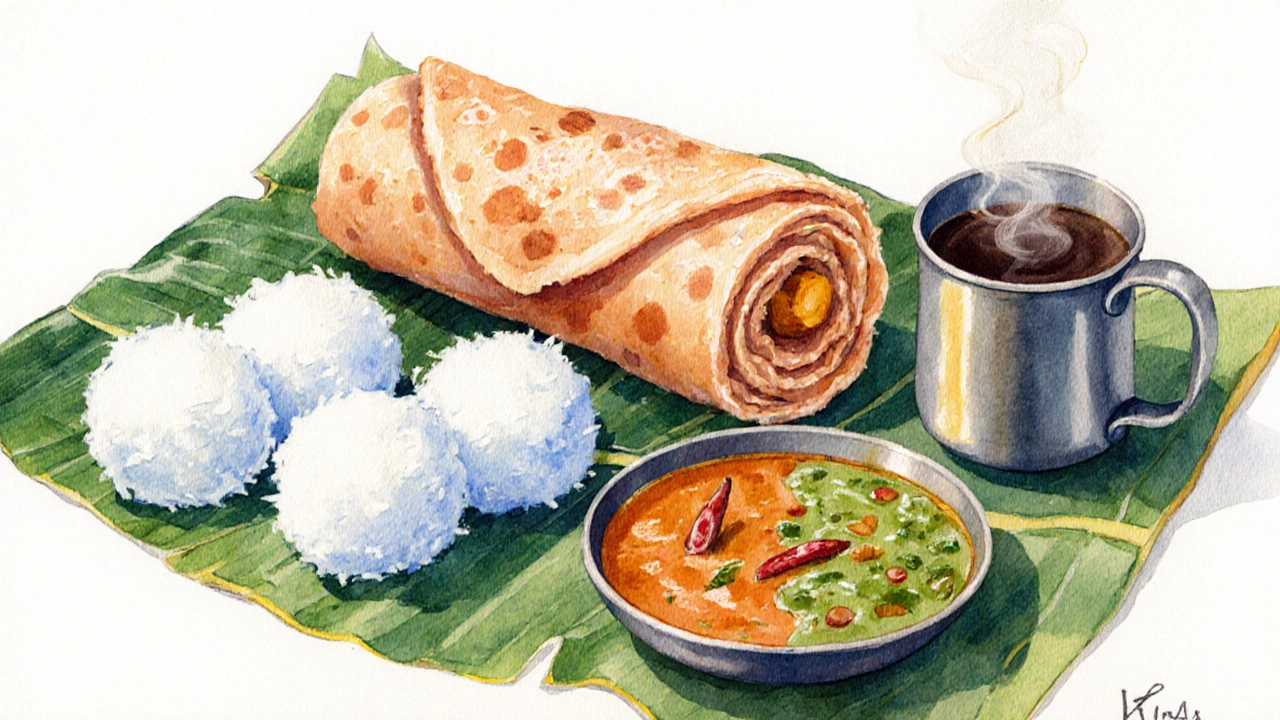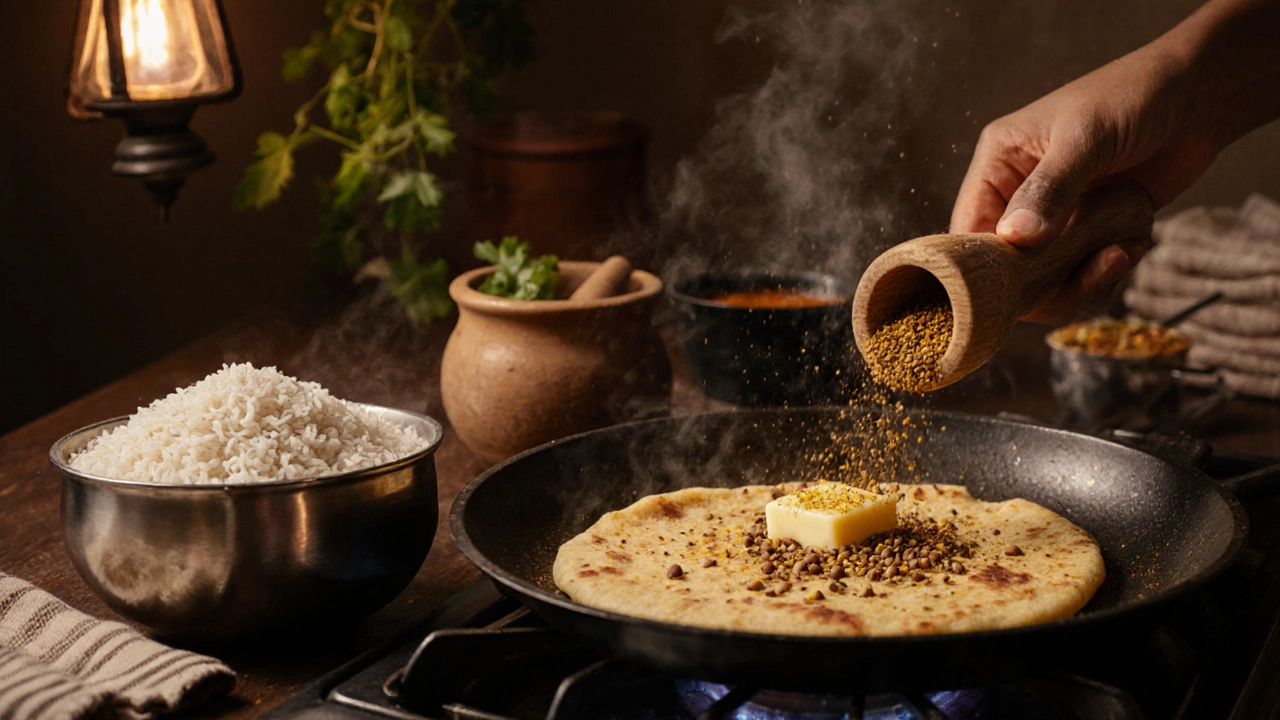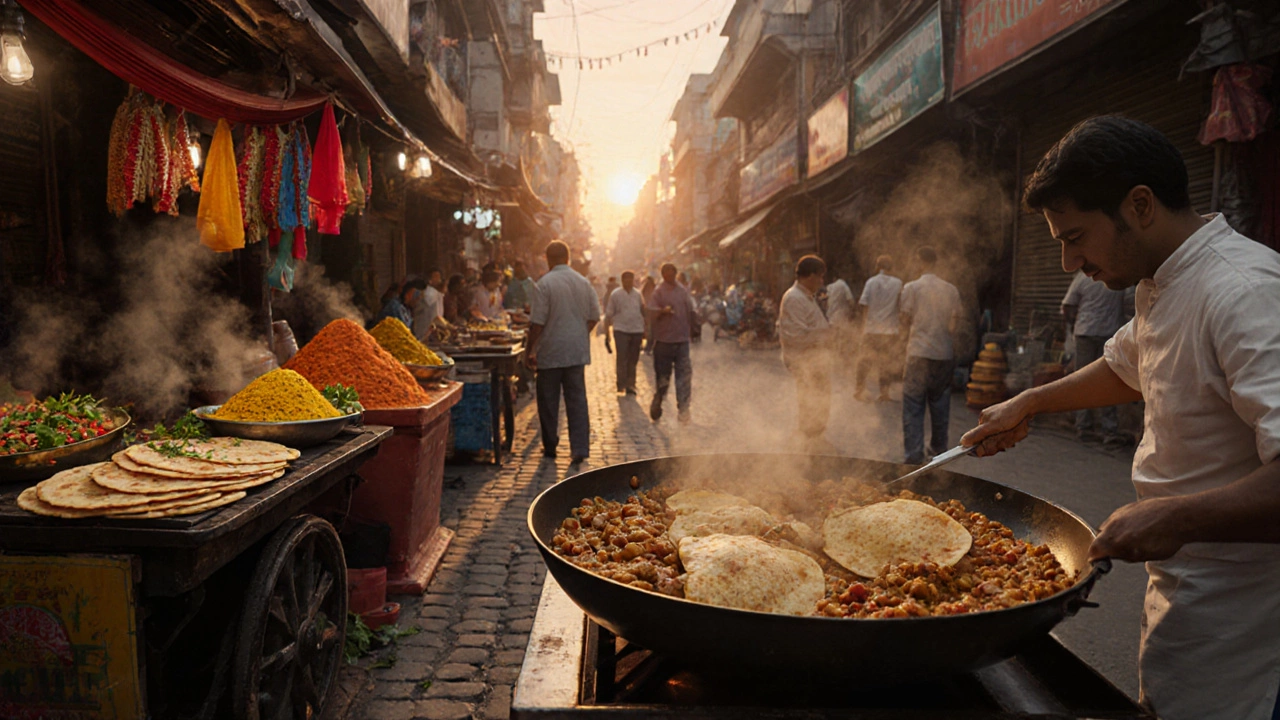Indian Breakfast Explorer
Select a region below to discover its unique breakfast traditions:
North India
Hearty, fried dishes like Aloo Puri and Paratha
South India
Light, fermented dishes like Dosa and Idli
West India
Sweet-savory blends like Poha and Sabudana Khichdi
East India
Rice-based dishes with subtle sweetness
Select a Region to Begin Exploring
Click on any region card above to learn about its distinctive breakfast offerings and characteristics.
Key Takeaways
- India’s morning meals vary dramatically from north to south, east to west.
- Common threads are fresh vegetables, legumes, fermented batters, and spices.
- You can recreate most dishes at home with a few pantry staples.
- Street stalls, dhabas, and home kitchens all serve distinct breakfast experiences.
- Knowing regional names helps you order confidently when traveling.
When you hear the phrase Indian breakfast is a umbrella term that covers dozens of dishes, it can feel overwhelming. The country’s size, climate, and cultural diversity mean that a sunrise meal in Mumbai looks nothing like one in Punjab. Below, we break down the main regional styles, highlight the most popular items, and give you practical tips for tasting or cooking them yourself.
What Defines an Indian Breakfast?
Unlike many Western mornings that revolve around cereal or toast, an Indian breakfast often blends savory and sweet, hot and cool. The core principles are:
- Freshness: Seasonal vegetables, herbs, and dairy dominate.
- Balance: A mix of carbs, protein, and spice keeps energy stable.
- Texture: Crunchy, fluffy, or soft items are prized, so dishes like Dosa (crispy) sit next to Idli (steamed).
Most meals are served with accompaniments-coconut chutney, tomato salsa, yoghurt‑based drinks, and pickles-adding layers of flavor without extra cooking.
North Indian Mornings
In the plains of Punjab, Delhi, and Uttar Pradesh, breakfast is hearty and often fried. Key dishes include:
- Aloo puri: Deep‑fried whole‑wheat bread paired with spicy potato curry.
- Paratha: Layered flatbread stuffed with potatoes, cauliflower, or paneer, served with butter or yoghurt.
- Chole bhature: Fluffy fried bread (bhature) with a rich chickpea gravy.
- Accompaniments: Pickled onions, fresh mango pickle, and a glass of Lassi (sweet or salted).
These items are calorie‑dense, perfect for a day of manual labor or long travel.

South Indian Sunrise
Down south, rice and lentils dominate. Fermentation creates light, airy batters that are cooked on a hot griddle.
- Dosa: Thin, crisp crepe made from rice‑lentil batter, often filled with spiced potatoes (Masala Dosa).
- Idli: Soft steam‑cooked rice cakes, eaten with sambar (lentil stew) and coconut chutney.
- Upma: Semolina porridge cooked with mustard seeds, curry leaves, and veggies.
- Pongal: Creamy rice‑moong dal mixture, seasoned with black pepper and ghee.
These dishes are lighter, often accompanied by crispy papads and a cup of strong filter coffee.
Western India: Gujarat, Maharashtra & Goa
Western states favor a blend of sweet and savory. Breakfast can be quick street snacks or elaborate thali plates.
- Poha: Flattened rice tossed with peanuts, mustard seeds, turmeric, and fresh coriander.
- Sabudana khichdi: Tapioca pearls cooked with potatoes, peanuts, and curry leaves-popular during fasts.
- In Maharashtra, Misal pav (spicy sprouted bean curry with buttered buns) is a breakfast staple.
- Goa offers Pao bhaji, a buttery toast topped with a thick vegetable mash.
Fresh coconut water or a glass of buttermilk often rounds out the meal.
Eastern Flavors: Bengal, Odisha & Assam
Rice again takes center stage, but the dishes carry a subtle sweetness and use mustard or poppy seed pastes.
- Luchi with alur dom: Fluffy deep‑fried flatbread served with a spicy potato gravy.
- Chirer pulao: Light rice pilaf with flattened rice, peanuts, and a hint of sugar.
- In Assam, Pitha (steamed rice cakes) are served with jaggery syrup.
Accompaniments often include homemade yoghurt and a cup of chai flavored with cardamom.
Common Ingredients & Cooking Techniques
Regardless of region, a handful of staples appear in almost every breakfast:
- Rice & lentils: Form the base for batters, idlis, and porridges.
- Wheat flour: Used for parathas, puris, and poori.
- Potatoes: The go‑to vegetable for stuffing or curries.
- Spices: Mustard seeds, cumin, turmeric, and chili powder create the signature kick.
- Yoghurt & ghee: Add richness and aid digestion.
Techniques range from deep‑frying (puris, bhature) to steaming (idli) to quick sautéing (upma). Mastering the tempering of spices in hot oil-known as “tadka”-is the secret to unlocking flavor.

How to Experience Indian Breakfast on the Go
If you’re traveling, look for these clues:
- Street stalls with large, sizzling pans usually serve dosa or chole bhature.
- Small “dhaba” eateries on highways often specialize in paratha and aloo puri.
- Tea stalls in metros serve poha or upma in paper plates-great for a quick bite.
- Ask locals for “breakfast thali”; it’s a platter that lets you sample several items in one sitting.
Most vendors accept cash; some larger cafes now accept digital payments. Expect a lively atmosphere-people chatting over chai, newspapers rustling, and the aroma of spices filling the air.
Recreating Indian Breakfast at Home
Here’s a quick cheat sheet to get you started:
- Pick a region you’re drawn to (e.g., South for dosa, North for paratha).
- Gather core pantry items: rice, urad dal, wheat flour, potatoes, onions, mustard seeds, cumin, turmeric, and yoghurt.
- For fermented batters (dosa/idli), soak rice and lentils overnight, grind, and let sit 8‑12hours.
- Use a non‑stick tawa for crisp dosas; a heavy skillet for parathas.
- Serve with simple coconut chutney (blend coconut, green chilies, tamarind) and sambar (lentil stew).
Even if you can’t perfect the texture right away, the flavors will still transport you to a bustling Indian morning.
Regional Breakfast Comparison
| Region | Typical Dish | Main Ingredients | Key Texture |
|---|---|---|---|
| North | Aloo puri | Whole‑wheat flour, potatoes, oil | Crispy & fluffy |
| South | Masala Dosa | Rice, urad dal, potato filling | Crunchy exterior, soft interior |
| West | Poha | Flattened rice, peanuts, mustard seeds | Light & slightly chewy |
| East | Luchi & alur dom | Wheat flour, potatoes, oil | Fluffy & saucy |
FAQs
What is the most common Indian breakfast ingredient?
Rice and wheat flour dominate because they are affordable staples across the country. Most dishes, from idli to paratha, start with one of these grains.
Can I find Indian breakfast in Australia?
Yes. Indian restaurants in Sydney and Melbourne often serve morning menus featuring dosa, poha, and chai. Vegetarian cafés also offer upma and idli.
Is Indian breakfast healthy?
Most dishes balance carbs, protein, and fiber. Steamed items like idli are low‑fat, while deep‑fried foods add calories. Pairing with yoghurt or fresh fruit keeps it nutritious.
What should I order if I’m a vegetarian?
Almost every regional breakfast has vegetarian options-dosa, poha, paratha, and sabudana khichdi are all meat‑free.
How early do Indians typically eat breakfast?
In most households breakfast is served between 7am and9am, but in bustling cities street vendors start cooking as early as 6am.
Whether you’re planning a trip, expanding your cooking repertoire, or simply curious about world cuisines, understanding the diversity of Indian breakfast will give you a flavorful window into the country’s culture and daily rhythm.
